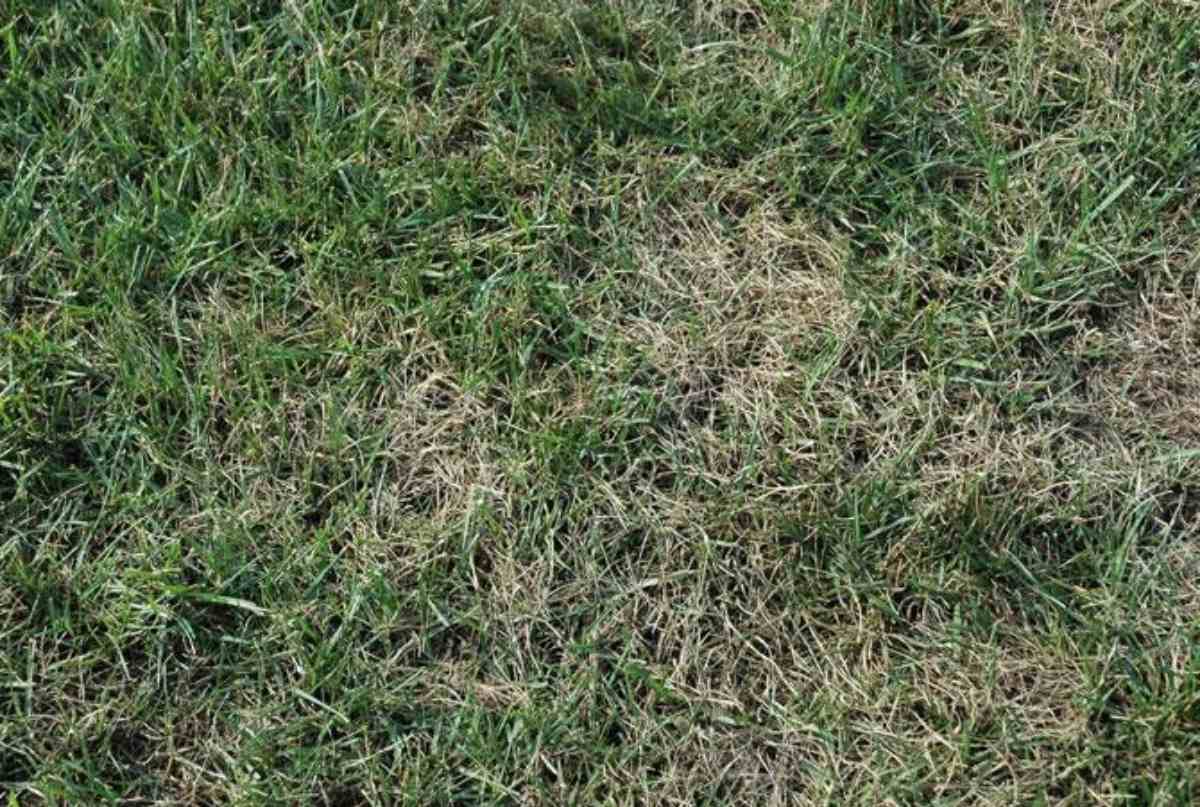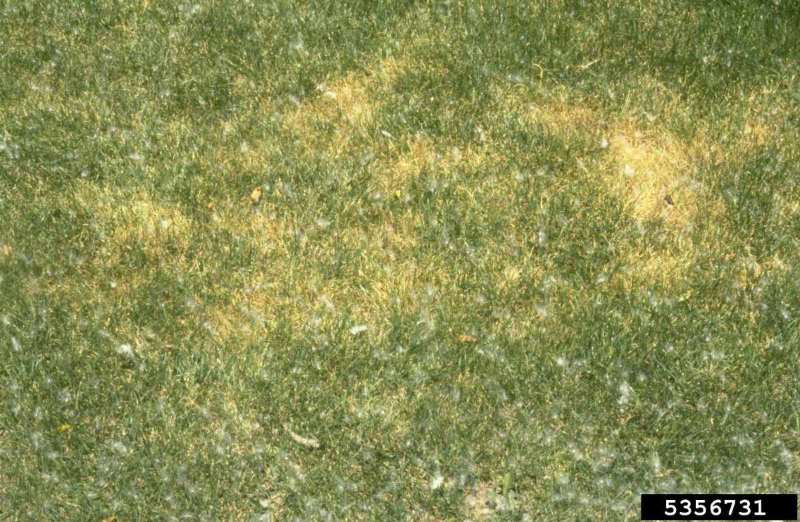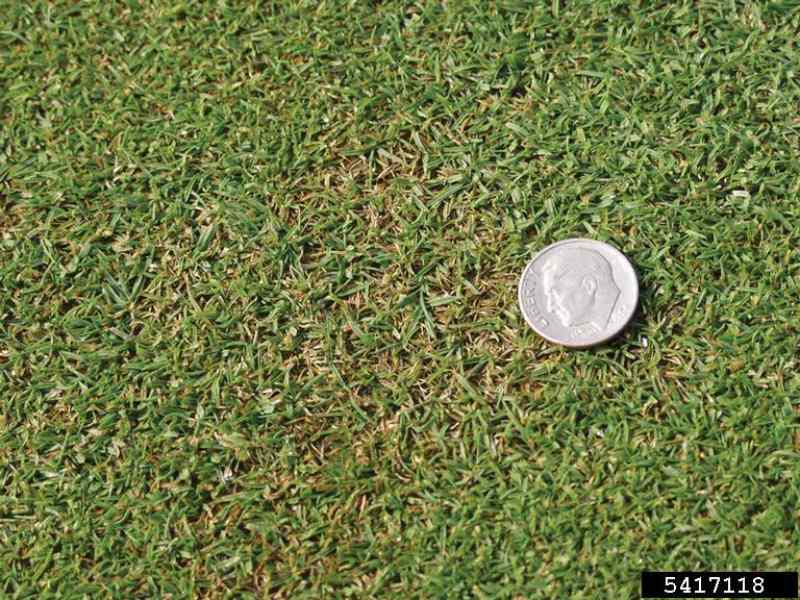
Leaf spot is a fungal disease that infects stressed grass with unsightly lesions. When left untreated for too long, leaf spot can kill your grass.
Knowing the causes of leaf spot diseases, such as excessive moisture or unbalanced nitrogen levels, can help you deal with leaf spot in your lawn. It’s important for homeowners to know how to correctly identify leaf spot and where it occurs to effectively treat their grass.
How to Identify Leaf Spot Disease in Your Lawn
Leaf spot is a fungal pathogen caused by the Bipolaris spp. and Drechslera spp. fungi. As the most common lawn disease in the Northeast, leaf spot is a fast-spreading disease that causes decay. It affects grass roots, shoots, and leaves.
Like with any disease, you have to know the symptoms of leaf spot to correctly identify it in your lawn. Watch out for these telltale signs:
- Browning or yellowing patches spreading through your yard
- Black or purple lesions on the grass blades
- Circular or irregularly shaped lesions
Leaf spot disease appears in the spring and summertime and is commonly found growing in lawns and golf courses.
| If you have identified leaf spot in your grass and need to get rid of it, call a LawnStarter lawn treatment pro to treat your lawn for you. Our customers pay an average of $106 per lawn treatment. |
What Causes Leaf Spot Disease?

Improper lawn care is a major cause of leaf spot. When grass is unhealthy, sparse, or improperly cared for, it’s susceptible to common lawn diseases like leaf spot. Dewy grass also cultivates the ideal climate for leaf spot to take hold in your lawn.
Here are some environmental and lawn care factors that encourage leaf spot:
- Excess moisture. Overwatering your lawn, watering too late in the evening, high humidity levels, poor drainage in your yard, or wet weather conditions are all factors that create an environment where leaf spot can flourish.
- Mowing your lawn too short. Lawn scalping stresses and weakens grass, making it susceptible to leaf spot.
- Excess thatch buildup. Thatch in your lawn prevents fertilizer from reaching grass roots and inhibits air and water from filtering into the soil.
- Imbalance in soil nutrients. Too much nitrogen fertilizer in the spring is a common cause, but too little nitrogen and low potassium can also encourage this disease.
- Poor air circulation. Compacted soil or excessive thatch can cause poor air circulation in the soil, which prevents soil from drying out properly.
- Lots of shade. Moisture stays around longer in yards where there’s a lot of shade, so shady lawns are more prone to leaf spot disease.
- Drought stress. Stressed lawns are more susceptible to diseases such as leaf spot.
- Spring and summer temperatures. Leaf spot emerges in temperatures ranging from 60 to 90 degrees Fahrenheit.
A healthy lawn is a disease-resistant lawn. Any kind of lawn stress weakens your grass and makes it susceptible to lawn diseases, so make sure to keep your lawn healthy with proper lawn maintenance.
See Related:
- 5 Signs Your Lawn Has Too Much Thatch
- 7 Ways to Improve Drainage in Your Yard
- How to Test Soil Moisture
Common Grass Types Affected by Leaf Spot
While warm-season grasses like Bermudagrass, centipedegrass, and Zoysiagrass are susceptible to leaf spot, this disease most commonly affects these cool-season grasses:
If your yard is planted with these types of turfgrass and is infected with leaf spot, you might want to consider overseeding with a resistant turfgrass.
Where and When Leaf Spot Occurs

To prevent leaf spot from emerging in your lawn, it helps to know what conditions promote the growth of this fungal disease.
Where: Leaf spot favors shady conditions where there is a lot of moisture.
When: Leaf spot emerges during the spring and summer months from March to September. It thrives in humid climates and temperatures that range from 60 to 90 degrees Fahrenheit.
Prevention and Treatment
Good lawn care practices are the best way to prevent or get rid of leaf spot:
- Irrigate properly. Water deeply 2-3 times a week to promote deep root growth. Avoid overwatering.
- Don’t scalp your lawn. Follow the one-third mowing rule and don’t trim your grass lower than 2 inches.
- Aerate your lawn to improve air circulation. This helps loosen compacted soil.
- Avoid fertilizing with excessive amounts of nitrogen. Too much fertilizer can worsen a leaf spot problem.
- Amend your soil if it lacks nutrients. Healthy soil promotes healthy grass and makes your lawn resistant to leaf spot disease.
- Regularly overseed your lawn with a cultivar that is resistant to leaf spot.
- Dethatch your lawn if the thatch level is above 1/2 inch.
- Rake the leaves on your lawn. Sitting leaves retain moisture, which encourages fungal growth.
- Use a lawn fungicide to treat your yard.
Lawns that aren’t properly cared for are at a higher risk of getting leaf spot. When grass is stressed, whether from a lack of lawn maintenance or from drought, it is more vulnerable to fungal diseases.
See Related:
- Lawn Fungus Treatments: Costs, Types, and Do They Work?
- How Long Should I Water My Lawn?
- How Often Should I Water My Lawn?
FAQ About Leaf Spot
If left untreated, leaf spot can kill large patches of your lawn during the spring or summer season.
It usually takes 2-6 weeks to see improvement after treating leaf spot. Treating leaf spot with fungicides requires repeated applications every 1-2 weeks, and most homeowners will have to apply fungicides 2-3 times.
Left untreated, leaf spot can spread to other turfgrasses. Leaf spot produces spores that can spread the disease, and it can also be spread by lawn machinery or foot traffic.
When to Hire a Pro
Good lawn care practices such as proper mowing, irrigation, aerating, and fertilizing, are all necessary to grow a healthy lawn that is resistant to leaf spot. If your lawn is already infected with leaf spot, hire lawn treatment pros. They will save you the time and trouble of treating your turf’s fungal diseases yourself.
Read More: Gray Leaf Spot Lawn Disease: How to Identify, Control, and Prevent It
Sources:
- “Bipolaris Leaf Spots.” Turf Pest Diagnostic Laboratory.
- “Drechslera (Melting Out/Leaf Spot of Turfgrasses).” By Lee Miller, associate professor of turfgrass pathology. Bugwood Wiki.
- “Extension Coordinator Offers Ways to Prevent the Spread of Leaf Spot.” University of Georgia.
- “New Turf Pathologist.” By Todd W. Abrahamson. Purdue University.
- “Turfgrass Diseases: Quick Reference Guide.” By Alfredo Martinez, Extension plant pathologist. University of Georgia Extension.
Main Image Credit: NC State Cooperative Extension